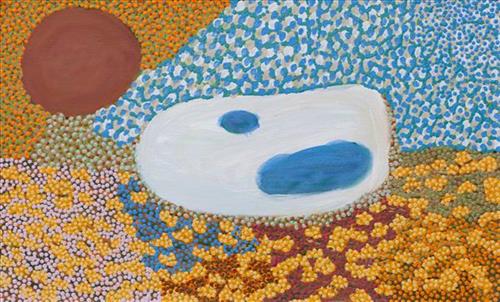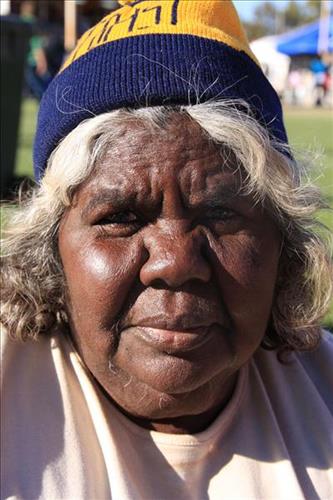111581966271
Wajaparni and Kukapunyu (Wajaparni, Canning Stock Route, Well 38 and Kukapunyu, Canning Stock Route, Well39)
“My home, I grow up there. Me and my families. Kukapunyu is a yinta (permanent spring) we camp there when it rains go to Wajaparni rock hole. Old people, my dad, my mummy go out early morning hunting around there. Get parnajarrpa (sand goanna), Lunki (witchetty grub), pussy cat. Get the dingo baby one and cook them up in the waru (fire) and sometimes mummy and daddy dingo kill them with a spear, Nyarru (poor fellow) you know desert times [laughs].. We walk all around here up and down. The old people move out from Kukapunyu to Jigalong.”
– Ngarga Thelma Judson
Wajaparni (Well 38) and Kukapunyu (Well 39) are waterholes located north east of Kunawarritji community along the Canning Stock Route.
During the pujiman period, Martu would traverse very large distances annually in small family groups, moving seasonally from water source to water source, and hunting and gathering bush tucker as they went. At this time knowledge of water sources was critical for survival, and today Martu Country is still defined in terms of the location and type of water. Each of the hundreds of claypans, rockholes, waterholes, soaks and springs found in the Martu desert homelands is known by name, location, quality and seasonal availability through real life experience and the recounting of Jukurrpa (Dreamtime) narratives.
The intersection of the Canning Stock Route with Wajaparni made this a site of early contact with Europeans for many Martu then living a pujiman life in the desert. Following the route’s construction, Martu encountered Europeans and other Martu working as cattle drovers as they would travel up and down the Stock Route from water source to water source. Increasingly, pujimanpa (desert dwellers) followed the route to newly established ration depots, mission and pastoral stations. They were drawn to the route in search of food, by a sense of curiosity, or by loneliness. By the late 1950s and early 1960s, most of the desert family groups had left the desert. Eventually, these factors combined with an extreme and prolonged drought in the 1960s to prompt the few remaining pujimanpa to move in from the desert.




